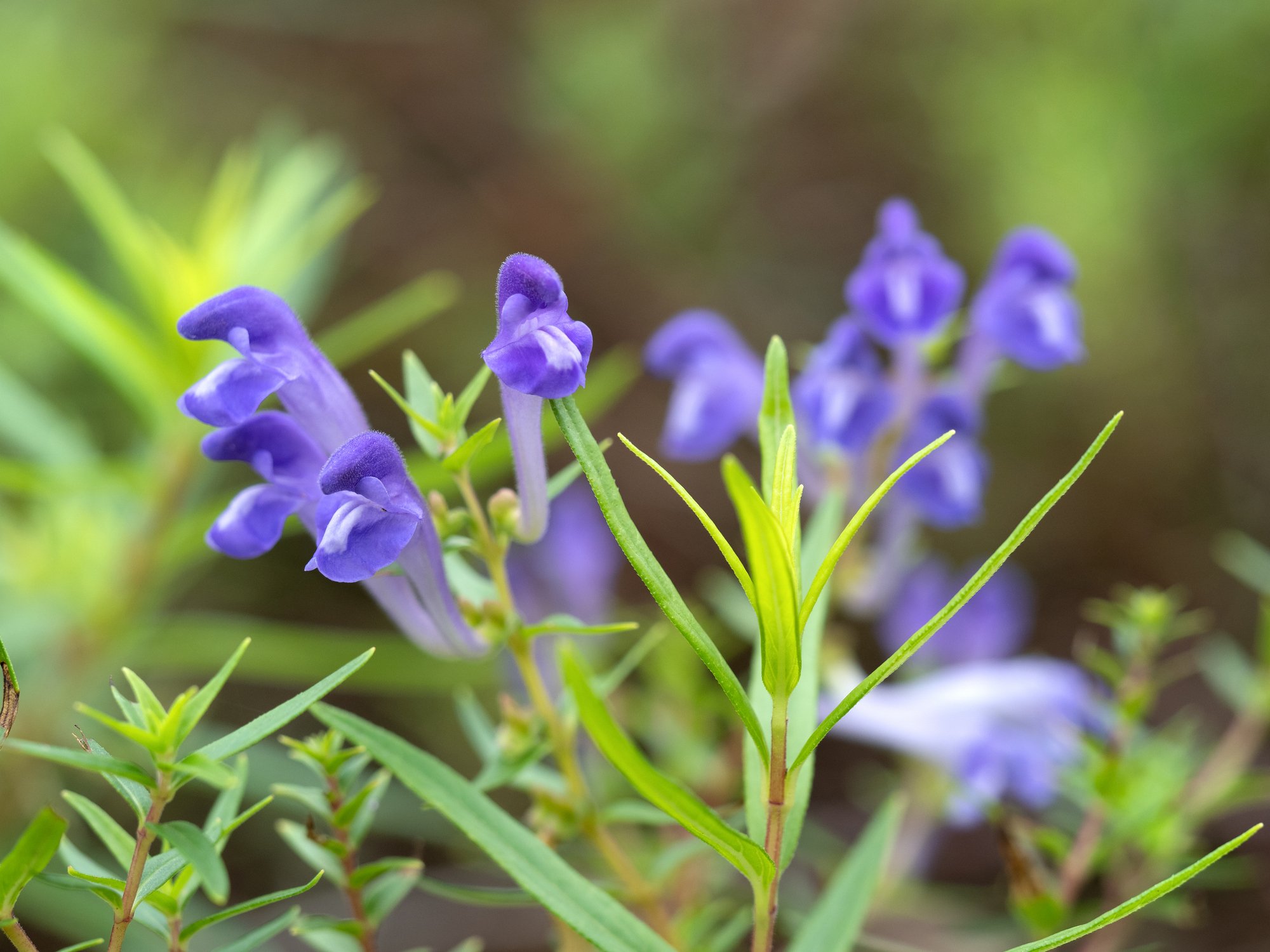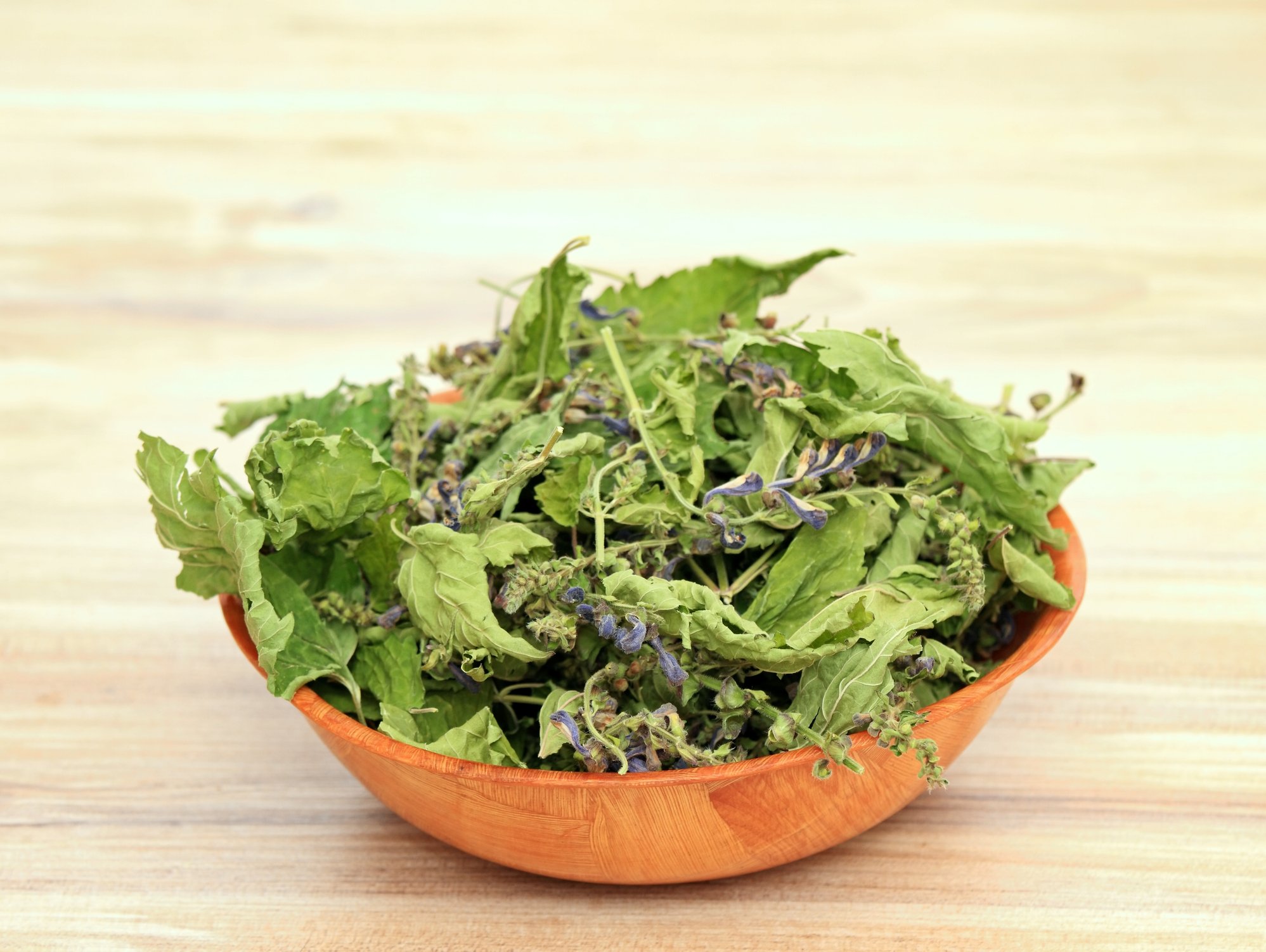
Skullcap
Skullcap (Scutellaria lateriflora)
Plant family
Lamiaceae
Other significant names
American
Virginian
Blue skullcap
Parts used
Herba
Typical forms of prescription:
Tinctures
Infusions
Skullcap (Scutellaria lateriflora) - Clinical Snapshot
Actions
Antispasmodic (relieves muscle spasms)
Nervine (supports the nervous system)
Anxiolytic (reduces anxiety)
Sedative (calms the nervous system)
Analgesic (pain-relieving)
Anticonvulsant (helps prevent seizures)
Indications
Neurological and nervous system conditions:
Epilepsy (especially grand mal seizures)
Chorea (involuntary movements)
Hysteria
Nervous tension
Depression
Insomnia
Reproductive system:
Premenstrual Syndrome (PMS)
Menopausal tension
⚠️Cautions / Safety⚠️
Traditionally used to promote expulsion of afterbirth, so avoid use during pregnancy
Use with caution if taking prescription anxiolytics or sedatives due to possible additive effects
Scutellaria lateriflora
Phytochemistry and Pharmacology
-
Includes: Baicalin, baicalein, scutellarin, wogonin
Action: Anxiolytic, antispasmodic, antioxidant, anti-inflammatory
Use: These are the primary active compounds in skullcap, particularly baicalin and scutellarin, which calm the central nervous system and reduce muscular tension. They help relieve nervous exhaustion, stress-induced insomnia, twitching, and anxiety with physical restlessness.
-
Includes: Catalpol (trace)
Action: Nervine trophorestorative, anti-inflammatory
Use: Although present in smaller amounts, iridoids help support the long-term rebuilding of the nervous system and reinforce skullcap’s role as a nervous system trophorestorative in cases of chronic stress, burnout, or convalescence.
-
Includes: Caffeic acid, ferulic acid
Action: Antioxidant, tissue protective
Use: These help reduce oxidative stress and inflammatory damage, especially in the nervous and muscular systems, supporting recovery from stress-related or neuroinflammatory conditions.
-
Action: Mildly astringent, toning
Use: These add a balancing effect to skullcap’s actions, helping to gently tone tissues and support gut and mucosal integrity — especially useful when stress manifests with loose stools or sensitivity in the digestive tract.
-
Action: Mildly relaxing, aromatic
Use: While present in smaller amounts, volatile oils may support subtle nervine effects, helping calm the breath and muscles, particularly when skullcap is used in teas or tinctures.
Traditional Use
The name “Skullcap” comes from the shape of its delicate blue flowers, which resemble tiny sleeping caps, like something out of Wee Willie Winkie. Herbalist Christopher Hedley beautifully described it as a remedy that “puts a cap on your thoughts,” calming the mind when anxieties spiral and sleep feels out of reach. Skullcap was widely used across many Indigenous North American traditions, including by the Cherokee, who valued it not only as a nervine but also as a gynaecological herb, particularly in cases of pelvic tension and menstrual imbalance.
Clinical Discussion
Scutellaria lateriflora is one of the most important nervines in the modern herbal dispensary. It is gentle yet deeply restorative, helping to rebuild nervous system tone in cases of chronic stress, anxiety, restlessness, or emotional exhaustion. It suits those whose minds are overactive, who struggle to “switch off.” It is also a useful support in hormone-related tension states, such as premenstrual irritability or emotional volatility during menopause. Modern studies suggest that skullcap acts on GABA receptors, which may help explain its calming and sleep-supportive effects.
Cultivation & Harvesting
Skullcap prefers damp, partially shaded environments, such as streambanks, marshy gardens, or woodland edges. It grows easily from seed and thrives in moist, loamy soil. Harvest the aerial parts (flowering herba) just as the flowers begin to bloom for optimal potency. Always ensure plant material is correctly identified, as low-quality or misidentified sources may be adulterated with hepatotoxic species such as Teucrium (germander), which can be harmful to the liver.
Key Botanical Features of Skullcap (Scutellaria lateriflora)
Growth
Scutellaria lateriflora is an herbaceous perennial native to North America.
It has a slender, upright, and branched growth habit.
Typically reaches 30–60 cm (12–24 inches) in height.
Stems are square-shaped (a key feature of the Lamiaceae family), smooth or slightly hairy.
Roots
Possesses a fibrous root system.
Roots are relatively shallow compared to deep taproots.
Adapted to moist habitats, often found near streams, marshes, and wetlands.
Leaves
Arrangement: Opposite (leaves grow in pairs at each node).
Shape: Lanceolate to ovate, with serrated (toothed) margins.
Size: About 2–6 cm long, depending on plant age and conditions.
Colour: Medium to dark green.
Surface: Thin and smooth, with a prominent midrib.
Leaves often become droopy or "skullcap-like" near the flowering nodes.
Flowers
Type: Bilabiate (two-lipped), typical of the mint family (Lamiaceae).
Inflorescence: Arises laterally from leaf axils, not at the terminal end—hence the species name lateriflora (“lateral flowers”).
Colour: Pale blue to violet, occasionally white.
Size: Small, around 6–8 mm long.
Shape:
Upper lip: Hood-like and curved, resembling a helmet or cap (giving the plant its common name).
Lower lip: Broad, with three lobes often dotted with white or lighter markings.
Calyx: Tubular with a prominent ridge or “scutellum” (a shield-like structure) that persists and hardens in fruit.
Fruit & Seeds
Type: Nutlets (four small, hard seeds produced per flower).
Shape: Ovoid and dark brown to black.
Dispersal: By gravity and occasionally by water movement.
Calyx remains and holds the nutlets until maturity.
Adaptations
Prefers moist, shaded environments like stream banks and woodland edges.
Tolerates seasonal flooding, but does not thrive in arid soils.
Attracts pollinators like bees due to its distinctive flower shape.
Self-seeding and can naturalise under suitable conditions.
Sustainability/conservation
It is not of concern, but it only grows wild in the US. Cultivated plants should be sourced in the UK. The UK species S. galericulata has some historical medicinal references, but it is unknown if it can be used as a replacement.





Sources
Bartram, T. (1998). Bartram’s Encyclopedia of Herbal Medicine. Constable.
Fisher, C. (2009). Materia Medica of Western Herbs, (2018 edition). Finchley Road, London. Aeon Books.
Hedley, C & Shaw, N. (2020). A herbal book of making and taking. Finchley Road, London. Aeon Books.
Hoffmann, D. (2003). Medical Herbalism: The Science and Practice of Herbal Medicine. Healing Arts Press.
McIntyre, A. (2019). The complete herbal tutor, revised and expanded edition. Finchley Road, London. Aeon Books.
Plants of the World Online | Kew Science. (n.d.). Plants of the World Online. https://powo.science.kew.org/
Disclaimer: This page is for educational purposes only. Consult a qualified medical herbalist before using herbs, especially during pregnancy, when trying to conceive, while breastfeeding, for medical conditions, or with children.
Read the full disclaimer → Medical Disclaimer.




